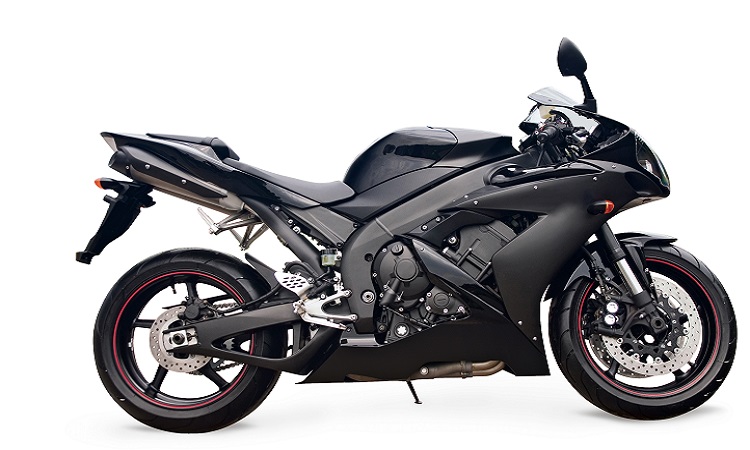Why Crash Guards Are Not Covered by Bike Insurance
Why Crash Guards Are Not Covered by Bike Insurance

You never really expect your bike to tip over until it does. A slow skid on a rainy day or a misjudged stop, accidents can happen in seconds. That’s why a little extra protection goes a long way. That is where a bike crash guard comes in. It is one of the first accessories people install after buying a new bike. Designed to reduce damage during a fall, it is a practical and visible addition to any two wheeler.
But here is the catch. Many riders assume that because this guard protects the bike, it must be covered under their insurance policy. This common assumption often leads to confusion during claims when the guard is not included in the approved compensation.
So what exactly is a crash guard and why is it not always covered? Let us take a closer look.
What Are Crash Guards?
Crash guards are solid metal bars attached to the sides of the frame, close to the engine area. If the bike topples, the guard takes the first impact, not your fuel tank or your footpeg. A good guard can also reduce injury by keeping the full weight of the bike off your leg during a fall.
The type of guard you choose often comes down to how and where you ride. If you are clocking hundreds of kilometres on highways, you will likely want something sturdier that can handle rougher terrain. For everyday city rides, a lighter, more compact guard usually works without weighing the bike down.
Many people call it a leg guard and it helps avoid unnecessary damage from small mishaps, which means fewer repair visits and lower maintenance costs in the long run.
Surprisingly, not all insurance policies see it that way. These guards do not always get included in standard coverage. While the reasons may not be immediately obvious, there’s a clear logic behind this—and that’s exactly what we’ll explore next.
Why Some Bike Accessories Aren’t Included in Coverage
It’s reasonable to expect that anything designed to protect your bike would be covered by insurance—but that’s not always the case. Most insurers make a clear distinction between factory-fitted components and items added later. If the equipment wasn’t part of the original build, it’s classified as an accessory.
Insurance covers the essential components like the engine, frame, and electricals. Anything external, such as a bike crash guard, needs to be declared separately. Otherwise, it may not be included in your policy by default.
There is also the question of standardisation. These guards come in all shapes and builds, some are heavy duty and built by the manufacturer, while others are lighter third-party versions fitted after purchase. Because there is no single standard for these accessories, insurers often find it difficult to gauge their exact value or replacement cost. That is one of the reasons they are commonly left out of standard cover. If your bike’s external accessories are not listed in your insurance paperwork, it probably is not covered.
So, what can you do if your setup is not protected by default? Let’s look at a few ways to make sure your cover matches your needs.
What Can Bike Owners Do?
Fortunately, just because a protective gear isn’t covered by default doesn’t mean you’re stuck without protection. With a little attention to your policy details, you can take steps to include the accessories that are important to you.
Many insurers offer optional accessory cover for add-ons such as leg guards and other nonstandard fittings. Under the Indian Motor Tariff (IMT 33) rules, this cover applies only when these items are declared, and it usually attracts a small extra premium, typically around 3-4% of the accessory’s value, as per IRDAI guidelines.
If your equipment is worth about ₹5,000, coverage might cost around ₹150-₹200. That’s a small investment for something that could save you much more in the long run, especially if you've invested in reliable, high-quality gear.
This is where bike guard insurance makes sense. If your current plan doesn’t mention it, talk to your insurer. In many cases, they’ll guide you through the process of adding it with a simple endorsement. Some insurers also offer add-on covers designed to protect nonstandard fittings like alloy wheels, saddlebags, and other similar accessories. While it may increase your premium slightly, it could save you far more in future repair or replacement costs.
It’s worth evaluating the total value of your accessories before deciding. If you’ve spent on sturdy gear, bike guard insurance might be a smart and cost-effective way to protect that investment.
Conclusion
When it comes to your bike, even the smallest details can make a big difference—not just in protection, but in how prepared you are if something goes wrong. That’s where two wheeler insurance becomes essential. It typically covers damages due to accidents, theft, natural calamities, and third-party liabilities, offering financial protection and peace of mind.
Disclaimer: The above information is for illustrative purposes only. For more details, please refer to the policy wordings and prospectus before concluding the sales.
RELATED ARTICLES
What Is 1 Year Own Damage Insurance?
Safety Tips to Follow Along With Third-Party Bike Insurance
8 tips to maintain safety while riding with a pillion rider
Downhill Bike Riding Safety Tips for a Risk-Free Ride
You Need to Know About Motorcycle Helmet Safety Rating










 Health Insurance
Health Insurance  Travel Insurance
Travel Insurance  Car Insurance
Car Insurance  Cyber Insurance
Cyber Insurance  Critical Illness Insurance
Critical Illness Insurance
 Pet Insurance
Pet Insurance
 Bike/Two Wheeler Insurance
Bike/Two Wheeler Insurance  Home Insurance
Home Insurance  Third Party Vehicle Ins.
Third Party Vehicle Ins.  Tractor Insurance
Tractor Insurance  Goods Carrying Vehicle Ins.
Goods Carrying Vehicle Ins.  Passenger Carrying Vehicle Ins.
Passenger Carrying Vehicle Ins.  Compulsory Personal Accident Insurance
Compulsory Personal Accident Insurance  Travel Insurance
Travel Insurance  Rural
Rural 











